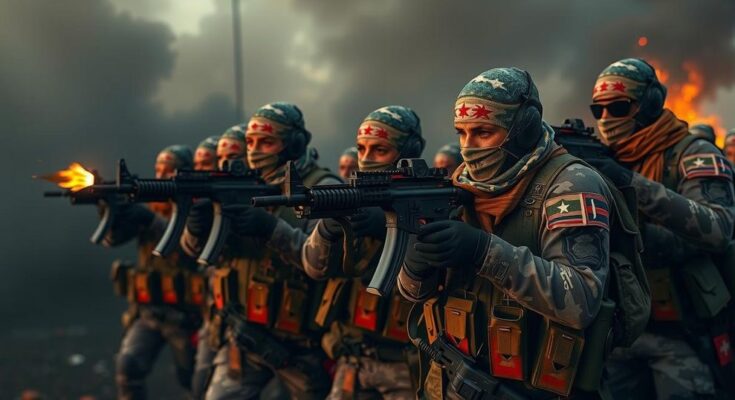Recent shifts in the Syrian conflict reveal that weakened support from allies Iran, Hezbollah, and Russia has enabled rebel factions to mount successful offensives, capturing vital territories, including Aleppo. This indicates a significant change in the power dynamics of the ongoing civil war, exposing vulnerabilities in President Bashar al-Assad’s regime as it grapples with domestic and external challenges.
As the Syrian civil war persists into its thirteenth year, recent developments reveal a significant shift in the power dynamics favoring rebel factions against President Bashar al-Assad’s regime. This shift is largely attributed to the diminishing support from key allies, specifically Iran, Hezbollah, and Russia, all of whom are preoccupied with their respective challenges. Consequently, opposition forces have taken advantage of these vulnerabilities, successfully launching an offensive that has resulted in the capture of considerable territory, including the strategic city of Aleppo.
Historically, the Assad regime has maintained a tight grip on power, bolstered by a robust coalition of foreign allies. However, the current geopolitical landscape has rendered these allies less effective. Iran is grappling with internal strife and military losses, while Hezbollah’s recent conflicts have diminished its operational capabilities. Concurrently, Russia, while still providing some assistance, has shifted its focus towards its prolonged engagement in Ukraine, thereby reducing its military presence in Syria.
Analysts indicate that the timing and execution of the recent offensive reflect the Assad regime’s increasing isolation. With its military struggling against a revitalized opposition and a lack of cohesive support from allied forces, the balance of power has clearly tilted. Notably, a shift in Turkey’s stance—who has historically opposed aggressive actions against the Assad regime—indicates a changing approach towards the conflict that could further embolden rebels.
Despite initial losses of territory during the war’s progression, the rebels have now commenced a well-coordinated offensive that has disrupted the long-standing stalemate of the conflict. The offensive and its rapid success indicate both the strategic preparation by opposition forces and the deteriorated confidence within the Assad regime, which seems ill-prepared to confront the current threat. Compounding the regime’s difficulties is a continuing economic crisis, which has caused disillusionment among the Syrian populace and sparked dissent within its military ranks.
In conclusion, the ongoing situation in Syria underscores the fragile coalition supporting President al-Assad. The decreasing strength of his allies amid their internal turmoil has opened a window for the rebels, who have prepared and executed an assault that has significantly altered the battlefield dynamics. As these geopolitical shifts unfold, the stability of the Assad regime remains a precarious topic for further exploration.
The Syrian civil war, which has lasted for over a decade, started in 2010 with peaceful protests against President Bashar al-Assad’s government. This escalated into a brutal conflict involving various factions, including government forces and rebel groups backed by foreign powers. Key allies of the Assad regime—namely Iran, Hezbollah, and Russia—have historically provided substantial military and strategic support, enabling the regime to maintain its hold over critical territories. However, recent developments suggest these allies are now facing their own challenges, which may have significant implications for the balance of power in the Syrian conflict.
The changing dynamics of the Syrian conflict highlight the vulnerabilities of the Assad regime, which is struggling to retain control amidst a backdrop of diminishing foreign support. Recent successful offensives by rebel forces against significant territories indicate an opportunity that they have capitalized upon, suggesting a potential shift in the long-standing stalemate of the war. The geopolitical landscape continues to evolve, as the interplay of internal and external conflicts shapes the future of Syria’s civil war.
Original Source: www.nytimes.com




